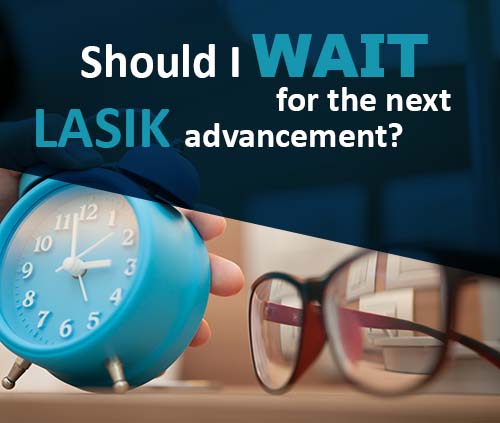
Many people considering LASIK surgery wonder if rapid changes in technology mean that they should wait for the next LASIK advancement. Let’s LASIK technology, the changes it has undergone, and what the future of surgical vision correction may hold. We’ll show you that there has never been a better time to get LASIK vision correction.
History of LASIK
To understand the future of LASIK, it helps to understand the past history of these types of procedures. It may seem like LASIK is a relatively new thing, but in reality, the modern LASIK procedure is the result of many years of developments in surgeries to improve vision. As early as the 1940s, a pioneering doctor in Columbia named Barraquar was using mechanical techniques to reshape corneas with a tool like the one used in modern procedures. In the 1980s, the laser was introduced into surgeries involving the cornea. On October 20, 1995, the Summit excise laser was approved by the FDA, making LASIK widely available in the United States.
Since then, LASIK procedures have improved in accuracy and safety. Newer bladeless procedures allow a femtosecond laser to create the necessary flap in the cornea instead of a special scalpel called a microkeratome. This is a proven technology that went through clinical trials in 2000. More recently, improved corneal mapping allows doctors a level of precision that leads to better vision with fewer complications.
If You’re Witing for the Next LASIK Advancement
Often the latest technological advances in surgical vision correction are seen in Europe years before they are approved in the United States. According to the latest from Cataract and Refractive Surgery Today Europe, LASIK isn’t going to dramatically change or be replaced by other technologies, such as intraocular implants, in the near future.
At this point, we already have lasers precise enough to etch a grain of sand and eye-tracking that could almost perform accurate surgery on someone not sitting still in a chair. For as much as 95% of the glasses-wearing population, there isn’t much to improve upon. It’s not likely that LASIK surgery will change much in the next couple of years.
Someday, doctors will be taking vision beyond 20/20 and pressing the limits of visual acuity. Future advances may include reshaping and stabilizing the shape of the cornea with eye drops rather than lasers, but this sort of advanced technology is likely to be decades away from being available to the general public. You probably want to improve your vision before that. Most advancements that are coming soon focus on those people who are not already good candidates for LASIK, such as people with very strong prescriptions, dry eyes, and thinner or more irregular corneas.
If you’ve thought about LASIK, now is the time to move forward. Start by getting answers to your questions. Ask those who have had LASIK surgery what they think of their results, and you will find that they are glad they did it. To schedule your free consultation, call 1.888.498.2020 or schedule online now!
Hear what our patients have to say about LASIK of Nevada.
